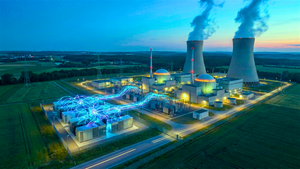TTC Q1 Earnings Call: Guidance Cut Amid Residential Weakness and Tariff Headwinds

Outdoor equipment company Toro (NYSE: TTC) missed Wall Street’s revenue expectations in Q1 CY2025, with sales falling 2.3% year on year to $1.32 billion. Its non-GAAP EPS of $1.42 per share was 1.8% above analysts’ consensus estimates.
Is now the time to buy TTC? Find out in our full research report (it’s free).
The Toro Company (TTC) Q1 CY2025 Highlights:
- Revenue: $1.32 billion (2.3% year-on-year decline)
- Adjusted EPS: $1.42 vs analyst estimates of $1.40 (1.8% beat)
- Management lowered its full-year Adjusted EPS guidance to $4.23 at the midpoint, a 2.3% decrease
- Adjusted EBITDA Margin: 16.1%
- Market Capitalization: $7.54 billion
StockStory’s Take
The Toro Company’s first quarter results were shaped by persistent macroeconomic headwinds and unfavorable weather that dampened residential demand, particularly among homeowners. CEO Rick Olson attributed the 2.3% revenue decline to weak consumer confidence and a late spring, which delayed the typical start of the season for lawn and garden equipment. While residential sales, especially for walk power mowers and zero-turn products, faced pressure, management noted ongoing strength in the professional segment, led by golf and grounds equipment. CFO Angie Drake highlighted that product mix and productivity gains supported margin improvement in professional products, while residential profitability declined due to higher costs and inventory valuation adjustments. The company continued to invest in operational efficiency, including workforce reductions and consolidation of manufacturing, to mitigate these challenges.
Looking ahead, management lowered full-year adjusted EPS guidance as macroeconomic pressures and elevated homeowner caution are expected to persist. Olson explained that trade downs to lower-priced products and delayed discretionary spending, particularly for big-ticket residential items, are weighing on the outlook. The company expects professional segment growth to offset some of this weakness, supported by continued demand in golf, grounds, and underground construction. However, Drake cautioned that tariff-related cost increases and higher material expenses will require further mitigation through pricing actions and productivity initiatives. She stated, “We continue to expect total company adjusted gross margin and adjusted operating earnings as a percentage of net sales to improve on a year-over-year basis,” but acknowledged margin pressure will remain in the residential segment. Management also factored in the assumption of normal weather patterns for the rest of the year in its revised outlook.
Key Insights from Management’s Remarks
Management cited residential market softness and external cost pressures as the primary reasons for missing revenue expectations, while strong execution in professional equipment and cost discipline supported margins.
-
Residential demand slowdown: Ongoing consumer caution and a late spring led to reduced demand for residential products. Management highlighted that customers are delaying purchases and trading down to entry-level models, which negatively impacted both sales volume and margins.
-
Professional segment stability: Despite overall revenue declines, the professional segment saw growth, particularly in golf and grounds equipment. CFO Angie Drake pointed to improved profitability in this segment due to favorable product mix and operational efficiencies.
-
Tariff mitigation strategies: Management emphasized actions to offset new and existing tariffs, including leveraging U.S.-based manufacturing, optimizing global sourcing, and implementing targeted price increases. These initiatives are designed to protect margins against rising costs for steel, aluminum, and imported components, especially as tariffs on China and other countries increase.
-
Operational footprint changes: The company wound down production at a Mexico facility and shifted manufacturing to the U.S., aiming to improve fixed cost absorption and enhance supply chain flexibility. Management expects these changes to provide ongoing cost savings and help navigate tariff headwinds.
-
Inventory and product mix management: Elevated inventories, particularly in residential and landscape contractor channels, resulted from weather-related delays. Management is actively monitoring field inventory and adjusting production and promotions to align with current demand patterns and avoid excess stock.
Drivers of Future Performance
Toro’s outlook is shaped by ongoing residential market weakness, cost inflation—including tariffs—and steady professional demand, with margin management a central focus for the year.
-
Residential segment headwinds: Management expects continued caution from homeowners due to high interest rates and macro uncertainty, leading to lower sales of higher-margin, big-ticket equipment. This will likely cause residential earnings margins to decline further, despite cost-saving actions and reduced promotions.
-
Tariff and input cost pressures: The company anticipates that tariffs will comprise roughly 3% of annual cost of goods sold in 2025, with the majority of exposure related to Chinese imports and steel/aluminum costs. Management plans to offset these through productivity improvements, price increases, and supply chain adjustments, but acknowledged residual risk if tariff rates or cost inflation exceed current expectations.
-
Professional segment resilience: Growth in golf, grounds, and underground construction is expected to continue, supported by healthy backlogs and ongoing infrastructure projects. The company believes this segment will remain the primary profit driver and help stabilize overall results amid residential softness.
Catalysts in Upcoming Quarters
In future quarters, the StockStory team will watch (1) signs of recovery in residential demand, particularly for higher-margin equipment, (2) the company’s ability to execute further cost savings and tariff mitigation as new rates take effect, and (3) sustained growth and backlog reduction in the professional segment, especially golf, grounds, and underground construction. The progress of inventory normalization will also be an important indicator.
The Toro Company currently trades at a forward P/E ratio of 16.5×. At this valuation, is it a buy or sell post earnings? See for yourself in our full research report (it’s free).
High Quality Stocks for All Market Conditions
Donald Trump’s victory in the 2024 U.S. Presidential Election sent major indices to all-time highs, but stocks have retraced as investors debate the health of the economy and the potential impact of tariffs.
While this leaves much uncertainty around 2025, a few companies are poised for long-term gains regardless of the political or macroeconomic climate, like our Top 9 Market-Beating Stocks. This is a curated list of our High Quality stocks that have generated a market-beating return of 183% over the last five years (as of March 31st 2025).
Stocks that made our list in 2020 include now familiar names such as Nvidia (+1,545% between March 2020 and March 2025) as well as under-the-radar businesses like the once-micro-cap company Kadant (+351% five-year return). Find your next big winner with StockStory today.
More News
View More




Recent Quotes
View More
Quotes delayed at least 20 minutes.
By accessing this page, you agree to the Privacy Policy and Terms Of Service.